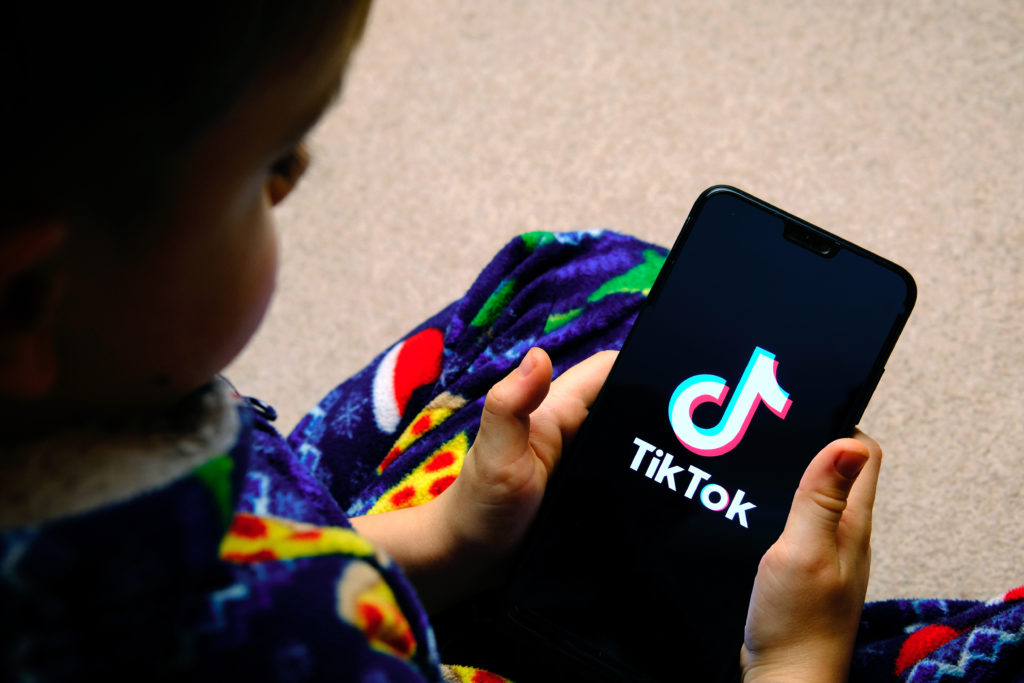Recently TikTok has been fined £12.7m for illegally processing the data of 1.4 million children under 13 who were using its platform without parental consent. This is the latest step taken by public authorities against the most popular app, but many other states have adopted measures to limit its use to protect child and adult users. TikTok can be harmful to teens and children, but it can also represent a tool to promote freedom of expression, creativity and entertainment all over the world. Here are some pros and cons of the most popular app for teens.
Pros and cons of TikTok: two sides of the coin
TikTok is a music video-based social media app that allows users to record themselves lip-syncing to popular songs, add effects, and share them with other users (Kid Matters Counseling, 2023). Users can also browse and interact with other users’ content, which covers a wide range of topics, songs, and styles. These videos can be grouped by hashtags, which often correspond to challenges, memes, or current events (Common sense media, 2022).
TikTok is actually the second version of the app. The original app went by the name Musical.ly which was acquired by the Chinese company Bytedance in late 2017 and underwent a total rebranding (Kid Matters Counseling, 2023). With 3 billion downloads to date, TikTok is currently the hottest social media site for tweens (children between 8 and 12) and teens (Brown, 2022).
Pros of TikTok: creativity, freedom of expression and entertainment
TikTok’s popularity is undeniable, and one of the reasons behind its success is linked to the fact that users look for entertainment by using it. In fact, TikTok is full of comedy sketches, duets, and interesting dances, all of which are very amusing for viewers. Additionally, because TikTok is so darn popular, teens can feel left out if they aren’t using it. The fear of missing out (FOMO) syndrome can be a real thing for them (Cyberwise, 2022).
TikTok is also a social network which offers great potential for making new friends and forming new connections (Cyberwise, 2022). With global coverage, the app offers the chance to meet people from all over the world, breaking the barriers of distance and language thanks to its inclusive language of music, dance, and creative content.
Finally, creating content to be delivered on TikTok as any other platform is not easy as it could seem. It requires skills, time, ideas, dedication and passion. Of course, it can lead to negative features, but it could represent a job opportunity as a content creator, once over 18 years old.
Cons of TikTok: inappropriate content, distorted image of yourself and infinite scrolling
TikTok’s emphasis on popular music means many videos include swearing and sexual lyrics, so it may not be age-appropriate for kids to use on their own. Even with limits, it’s easy to find people wearing revealing clothing and dancing suggestively, although TikTok won’t let you search for objectionable content such as “porn” (Common sense media, 2022).
While the platform is working hard on mitigating issues concerning sexual predators reaching out to underage kids, this issue is still prevalent on TikTok. This can make it easy for predators to use flattery and compliments as a way into kids’ lives, making them feel special while putting them at ease” (Brown, 2022).
TikTok’s algorithm “exploits the vulnerability” of children. According to some research conducted by the Center for Countering Digital Hate, changing a user’s name from “Sarah” to “Sarah Lose Weight” on TikTok could result in its algorithm serving 12 times more self-harm content. This is because the algorithm recognises vulnerability and, instead of seeing it as something it should be careful around, it sees it as a potential point of addiction – of helping to maximise time on the platform for that child by serving them up content that might trigger some of the pre-existing concerns” (Rawlinson, 2023).
This could contribute to low confidence and self-esteem, especially when it comes to the way we look. Young people are being exposed to videos featuring people with the ‘perfect’ body and the ‘perfect’ life. From influencers with toned abs, to diet culture trends, these videos can have a significant impact on a child’s body image. Seeing these videos regularly can lead to an unrealistic view of what a “normal” body looks like. Some believe this has played a part in the rise of eating disorders in young people in recent years (Hebert, 2023).
Linked to that, TikTok’s algorithm is cleverly designed to entice you to keep scrolling through and watching video after video. This is great for the platform’s engagement metrics, but less so for children’s mental health. Spending too much time on social media can impact stress levels and sleep. But some young people are trying to kick the habit. There have been reports of students deleting the app around exam time because it is so disruptive to their studies (Hebert, 2023).
Data protection rules safeguarding children on TikTok

In April 2023, Britain’s data protection authority, the Information Commissioner’s Office (ICO), issued a $15.9 million fine to TikTok, the popular video-sharing app, saying the platform had failed to abide by data protection rules intended to safeguard children online (Singer, 2023). The Information Commissioner’s Office said TikTok had inappropriately allowed up to 1.4 million children under the age of 13 to use the service in 2020, violating British data protection rules that require parental consent for organizations to use children’s personal information.
Furthermore, TikTok failed to obtain that consent, regulators said, even though it should have been aware that younger children were using the service (Singer, 2023). This breach means that the platform could have collected and used children’s personal data to track them and profile them, potentially delivering harmful, inappropriate content at their very next scroll (Rawlinson, 2023).
The ICO’s investigation relates from May 2018 to July 2020, and it found that the video-sharing app did not do enough to identify underage users or remove them from the platform, even though TikTok had rules barring children under 13 from creating accounts. In fact, in reality, it only requires a self-certification that the applicant was over 13, by clicking a box with no verification, with no extra checks (Hern, Adu, 2023). In this sense, TikTok failed to take adequate action, even after some senior employees at the video-sharing platform raised concerns internally about underage children using the app (Singer, 2023).
“There are laws in place to make sure our children are as safe in the digital world as they are in the physical world. TikTok did not abide by those laws”.
– John Edwards – Information Commissioner’s Office (ICO)
TikTok’s privacy protection practice in the past and future
On the other hand, TikTok has argued that it has made some changes in its practices and functions since 2018, the period when the ICO made its investigation and that they keep on working to keep the platform as safe as possible for the TikTok community.
Now the site uses more signals than a user’s self-declared age when trying to determine how old they are, including training its moderators to identify underage accounts and providing tools for parents to request the deletion of their underage children’s accounts. Moreover, TikTok introduced some specific settings to limit the time spent on the app and to block some potentially harmful content when the user is a child, thanks to the “Family Pairing” feature.
Nevertheless, this is not the first time that TikTok has been fined. In 2019, Musical.ly, the operator of the platform now known as TikTok, agreed to pay $5.7 million to settle charges by the Federal Trade Commission that it had violated children’s online privacy protection rules in the United States (Singer, 2023).
Also in 2021, the Dutch Data Protection Authority (DPA) imposed a fine of €750,000 on TikTok for violating the privacy of young children. The information provided by TikTok to Dutch users – many of whom are young children – when installing and using the app was in English and thus not readily understandable. By not offering their privacy statement in Dutch, TikTok failed to provide an adequate explanation of how the app collects, processes and uses personal data (EDPB, 2021).
Countries’ specific cases of regulating data privacy on TikTok
Ireland is also following the UK’s strategy. In fact, the Irish Data Protection Commission triggered a dispute resolution mechanism set out in the GDPR and sent the case to the European Data Protection Board (EDPB) alleging TikTok mishandled children’s data, violating the European Union’s landmark privacy rules, the General Data Protection Regulation (Goujard, 2023).
Finally, because of the increase and promotion of inappropriate content, TikTok has been banned in several countries, including China (where the app originated), India, Bangladesh, and Pakistan. It has also been banned on government devices in Canada, Belgium, Denmark, New Zealand, Taiwan, the UK, the US, and for anyone working at the European Commission (McCallum, Gerken, Kleinman, 2023).
Also, Alabama, Maryland, Nebraska, Oklahoma, South Carolina, South Dakota, Utah, and Texas have banned the app on government devices (as in the UK) and, there’s been a push for Apple and Google to raise the minimum age for users to at least 17 (Kid Matters Counseling, 2023).
How to better use TikTok?
TikTok can be an entertaining and engaging platform. It offers a space for teens to express themselves in whatever way they like (Hebert, 2023). It is fun, creative, and there’s a lot of good content on there, but users should be aware of the risks connected with it.
For the parents, one suggestion is to have a conversation about what is on TikTok and also open a personal account in order to understand what their child is watching. With a feature called “Family Pairing”, parents can link their child’s account to their own where they can control direct messages, set screen time limits, and turn on/off restricted content directly from their phone.
Parents will also receive a notification if any of the settings are changed or turned off from their child’s phone. Parents can also activate the “Digital Wellbeing” setting, which will set time limits on app use, and which can help children moderate the time they spend on their phones (Kid Matters Counseling, 2023).
Promoting awareness means also learning the risks children could encounter on the web. By getting digital literacy lessons in school, they learn how to protect their privacy, manage their reputations, avoid cyberbullying and sexting, and learn how to report bad behaviours (Cyberwise, 2022). It is essential that kids get these lessons, as well as parents, professionals who work with children and civil society as a whole to be able to detect suspicious behaviours from the beginning.
One last recommendation regards the fact of building a dialogue on this hot issue between adults and young users. TikTok spread because it offered the chance to teens to express themselves, even if not considering all the risks connected to it. Teens have a lot to say about this language, which is more their language than everyone’s else. This could be a good chance for adults, parents and caregivers to open up and discover more about this world which pertains to their children while protecting them at the same time.

Humanium strongly believes in the importance of creating a free, safe and protected digital space for children and young people to express themselves and for adults to know something more about them, their world and how to better protect them and promote their rights. If you want to support our work, please consider making a donation, volunteering or becoming a member.
Written by Arianna Braga
References:
Brown, M. (2022). Is TikTok Safe for Kids? Retrieved from Parents at https://www.parents.com/kids/safety/internet/is-tiktok-safe-for-kids/, accessed on 28 June 2023.
Common sense media (2022). Parents’ Ultimate Guide to TikTok. Retrieved from Common sense media at https://www.commonsensemedia.org/articles/parents-ultimate-guide-to-tiktok, accessed on 27 June 2023.
Cyberwise (2022). 8 Pros and Cons of TikTok On Kids’ Mental Health. Retrieved from Cyberwise at https://www.cyberwise.org/post/8-pros-and-cons-of-tiktok-on-kids-mental-health, accessed on 28 June 2023.
EDPB (2021). Dutch DPA: TikTok fined for violating children’s privacy. Retrieved from European Data Protection Board (EDPB) at https://edpb.europa.eu/news/national-news/2021/dutch-dpa-tiktok-fined-violating-childrens-privacy_en, accessed on 27 June 2023.
Goujard, C. (2023). TikTok faces EU scrutiny on kids’ privacy. Retrieved from Politico at https://www.politico.eu/article/eu-regulators-set-to-scrutinize-tiktok-case-on-kids-privacy-violations/, accessed on 28 June 2023.
Hebert E. (2023). How TikTok affects children’s mental health. Retrieved from The Children’s Society at https://www.childrenssociety.org.uk/what-we-do/blogs/how-tiktok-affects-childrens-mental-health, accessed on 28 June 2023.
Hern A., Adu A. (2023). TikTok fined £12.7m for illegally processing children’s data. Retrieved from The Guardian at https://www.theguardian.com/technology/2023/apr/04/tiktok-fined-uk-data-protection-law-breaches, accessed on 27 June 2023.
Kid Matters Counseling (2023). 5 Things Parents Need to Know about Tik-Tok (Updated 2023). Retrieved from Kid Matters Counseling at https://kidmatterscounseling.com/blog/5-things-parents-need-to-know-about-tik-tok/, accessed on 27 June 2023.
Rawlinson (2023). How TikTok’s algorithm ‘exploits the vulnerability’ of children. Retrieved from The Guardian at https://www.theguardian.com/technology/2023/apr/04/how-tiktoks-algorithm-exploits-the-vulnerability-of-children, accessed on 27 June 2023.
Singer N. (2023). TikTok Is Fined $15.9 Million Over Misusing Kids’ Data in Britain. Retrieved from New York Times at https://www.nytimes.com/2023/04/04/business/media/tiktok-fine-uk-kids-privacy.html, accessed on 28 June 2023.


